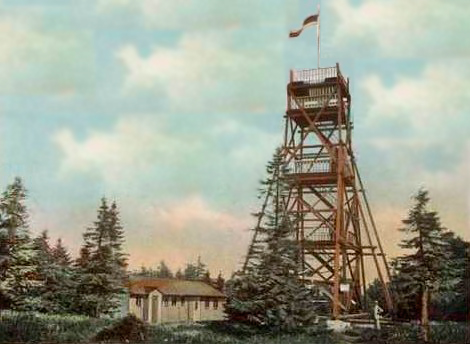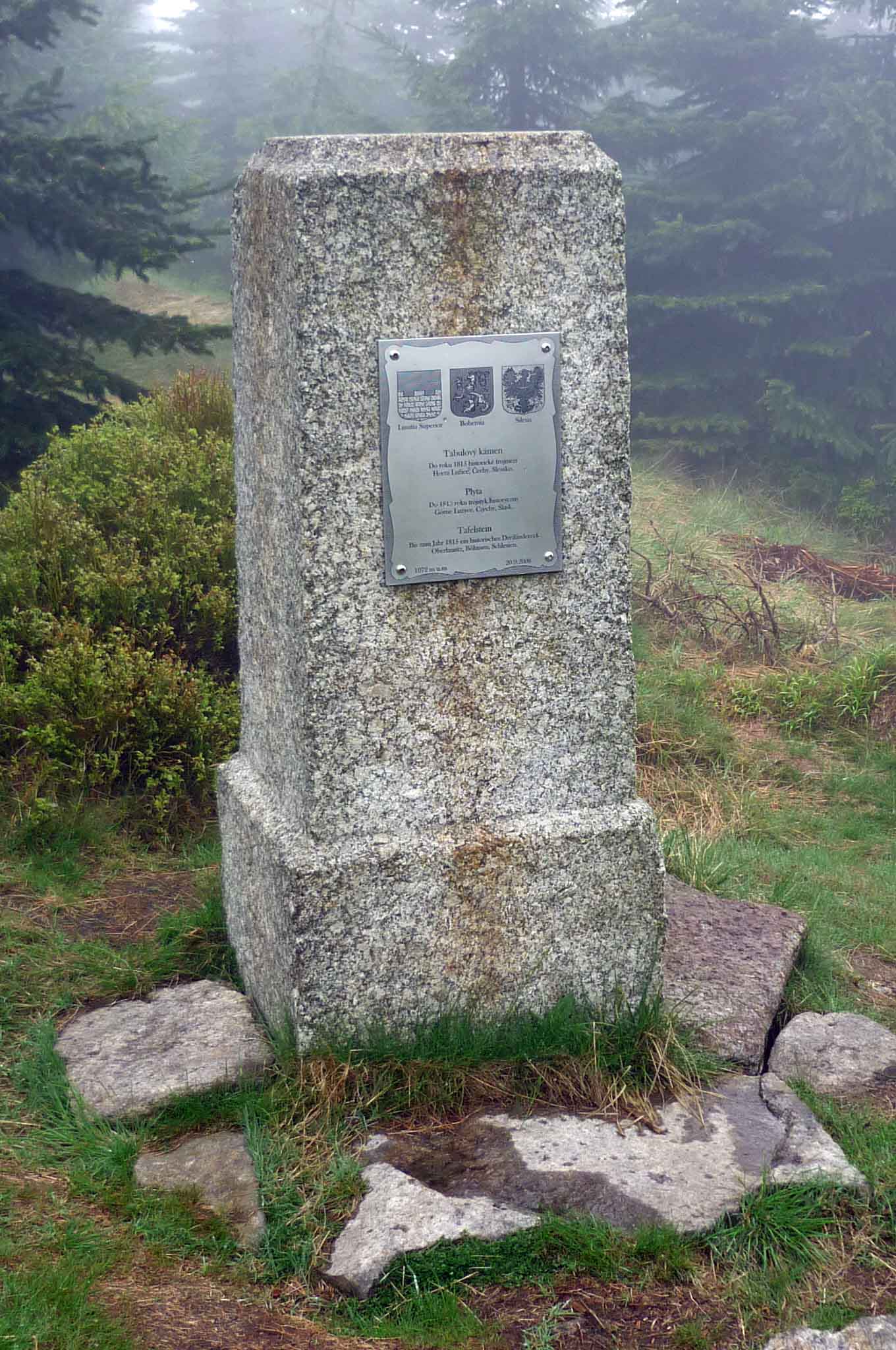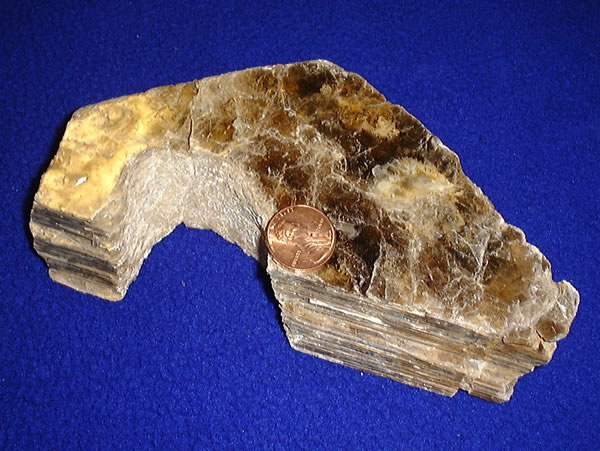|
Jizera Mountains
Jizera Mountains (), or Izera Mountains (; ), are part of the Western Sudetes on the border between the Czech Republic and Poland. The range got its name from the Jizera (river), Jizera River, which rises at the southern base of the Smrk (Jizera), Smrk massif. The Fagus sylvatica, beech forests within the Jizera Mountains were added to the UNESCO World Heritage Site known as Ancient and Primeval Beech Forests of the Carpathians and Other Regions of Europe, because of their outstanding preservation and testimony to the ecological history of Europe (and the beech family specifically) since the Last Glacial Period. Geography The range stretches from the Lusatian Mountains (Zittau Mountains) in the northwest to the Krkonoše in the southeast. The Jizera Mountains comprise the sources of the Jizera river, as well as of the Kwisa and the Lusatian Neisse. The major part in the south is formed from granite, in the northern part from gneisses and mica schists, with some areas formed from ... [...More Info...] [...Related Items...] OR: [Wikipedia] [Google] [Baidu] |
Liberec
Liberec (; ) is a city in the Czech Republic. It has about 108,000 inhabitants, making it the fifth largest city in the country. It lies on the Lusatian Neisse River, in a basin surrounded by mountains. The city centre is well preserved and is protected as an Cultural monument (Czech Republic)#Monument zones, urban monument zone. Liberec was once home to a thriving textile industry and hence nicknamed the "Manchester of Bohemia". A symbol of the city and the main landmark of the panorama of Liberec is the Ještěd Tower. Since the end of the 19th century, the city has been a conurbation with the suburb of Vratislavice nad Nisou and the neighbouring city of Jablonec nad Nisou. Administrative division Liberec consists of 33 municipal parts (in brackets population according to the 2021 census): *Liberec I-Staré Město (9,793) *Liberec II-Nové Město (2,979) *Liberec III-Jeřáb (5,657) *Liberec IV-Perštýn (3,117) *Liberec V-Kristiánov (5,312) *Liberec VI-Rochlice (17,268) *Li ... [...More Info...] [...Related Items...] OR: [Wikipedia] [Google] [Baidu] |
Lusatian Mountains
The Lusatian Mountains (; ; ) are a mountain range of the Western Sudetes on the southeastern border of Germany with the Czech Republic. They are a continuation of the Ore Mountains range west of the Elbe valley. The mountains of the northern, German, part are called the Zittau Mountains. Geography The range is among the westernmost extensions of the Sudetes, which stretch along the border between the historic region of Silesia in the north, and Bohemia and Moravia in the south up to the Moravian Gate in the east, where they join the Carpathian Mountains. The northwestern foothills of the Lusatian Mountains are called the Lusatian Highlands; in the southwest the range borders on the České Středohoří mountains. The range is largely made up of sandstone sedimentary rocks leaning on a Precambrian crystalline Basement (geology), basement. The northern ridge is marked by the Lusatian Fault, a geological disturbance zone separating the Bohemian sandstones from the Lusatian gr ... [...More Info...] [...Related Items...] OR: [Wikipedia] [Google] [Baidu] |
Smrk
Smrk may refer to: * Smrk (Jizera Mountains) Smrk (; ) is the highest mountain in the Czech Republic, Czech part of the Jizera Mountains. Rising , it is sometimes known as "The King of the Jizera Mountains". Geography The top of the mountain lies in the municipal territory of Lázně Lib ..., the highest mountain in the Jizera Mountains of Bohemia, Czech Republic at 1124m * Smrk (Moravian-Silesian Beskids), a mountain in the Moravian-Silesian Beskids range in the Czech Republic * Smrk (Třebíč District), Vysočina, Czech Republic {{disambiguation ... [...More Info...] [...Related Items...] OR: [Wikipedia] [Google] [Baidu] |
Tafelfichte Clean
Smrk (; ) is the highest mountain in the Czech part of the Jizera Mountains. Rising , it is sometimes known as "The King of the Jizera Mountains". Geography The top of the mountain lies in the municipal territory of Lázně Libverda in the Liberec Region of northern Bohemia. On the eastern rim of the plateau is the boundary with Poland; the Polish summit west of Świeradów-Zdrój reaches a height of . The summit offers a panoramic view to the prominent Sněžka peak of the Giant Mountains in the east, as well as to the Lusatian Highlands beyond the German border in the west up to the cooling towers of Boxberg Power Station. History The "Tabulový kámen" (''Tafelstein'') stone monument on the northern slope marks the site, which since the Middle Ages formed the historic tripoint between * the Upper Lusatian lordship of ''Meffersdorf'' (Polish: Unięcice, in present-day Pobiedna) * the Lower Silesian duchy of Jawor, where the lands around Szklarska Poręba (''Schreiberh ... [...More Info...] [...Related Items...] OR: [Wikipedia] [Google] [Baidu] |
Nová Louka
Nová louka is a mountain meadow in the municipality of Bedřichov in the Liberec Region of the Czech Republic, protected as a nature reserve. It is located in the Jizera Mountains Jizera Mountains (), or Izera Mountains (; ), are part of the Western Sudetes on the border between the Czech Republic and Poland. The range got its name from the Jizera (river), Jizera River, which rises at the southern base of the Smrk (Jizera), .... Name In 1597, the locality was called Medvědí louka (literally 'Bear Meadow'). Today it is named after a nearby hunting lodge located outside the protected area, which was originally called Nová Louka (i.e. 'new meadow'), later Panský dům, and today is called Šámalova chata. The meadow is sometimes referred to as Šámalova louka. Nature The reason for the protection is are natural communities of peat and waterlogged spruce, with enclaves of natural forestless peats and with a large number of rare and endangered organisms. The Blatný Brook flow ... [...More Info...] [...Related Items...] OR: [Wikipedia] [Google] [Baidu] |
Precipitation (meteorology)
In meteorology, precipitation is any product of the condensation of atmospheric water vapor that falls from clouds due to gravitational pull. The main forms of precipitation include drizzle, rain, rain and snow mixed ("sleet" in Commonwealth usage), snow, ice pellets, graupel and hail. Precipitation occurs when a portion of the atmosphere becomes saturated with water vapor (reaching 100% relative humidity), so that the water condenses and "precipitates" or falls. Thus, fog and mist are not precipitation; their water vapor does not condense sufficiently to precipitate, so fog and mist do not fall. (Such a non-precipitating combination is a colloid.) Two processes, possibly acting together, can lead to air becoming saturated with water vapor: cooling the air or adding water vapor to the air. Precipitation forms as smaller droplets coalesce via collision with other rain drops or ice crystals within a cloud. Short, intense periods of rain in scattered locations are called shower (p ... [...More Info...] [...Related Items...] OR: [Wikipedia] [Google] [Baidu] |
Basalt
Basalt (; ) is an aphanite, aphanitic (fine-grained) extrusive igneous rock formed from the rapid cooling of low-viscosity lava rich in magnesium and iron (mafic lava) exposed at or very near the planetary surface, surface of a terrestrial planet, rocky planet or natural satellite, moon. More than 90% of all volcanic rock on Earth is basalt. Rapid-cooling, fine-grained basalt is chemically equivalent to slow-cooling, coarse-grained gabbro. The eruption of basalt lava is observed by geologists at about 20 volcanoes per year. Basalt is also an important rock type on other planetary bodies in the Solar System. For example, the bulk of the plains of volcanism on Venus, Venus, which cover ~80% of the surface, are basaltic; the lunar mare, lunar maria are plains of flood-basaltic lava flows; and basalt is a common rock on the surface of Mars. Molten basalt lava has a low viscosity due to its relatively low silica content (between 45% and 52%), resulting in rapidly moving lava flo ... [...More Info...] [...Related Items...] OR: [Wikipedia] [Google] [Baidu] |
Schist
Schist ( ) is a medium-grained metamorphic rock generally derived from fine-grained sedimentary rock, like shale. It shows pronounced ''schistosity'' (named for the rock). This means that the rock is composed of mineral grains easily seen with a low-power hand lens, oriented in such a way that the rock is easily split into thin flakes or plates. This texture (geology), texture reflects a high content of platy minerals, such as mica, talc, chlorite group, chlorite, or graphite. These are often interleaved with more granular minerals, such as feldspar or quartz. Schist typically forms during regional metamorphism accompanying the process of mountain building (orogeny) and usually reflects a medium Metamorphism#Metamorphic grades, grade of metamorphism. Schist can form from many different kinds of rocks, including sedimentary rocks such as mudstones and igneous rocks such as tuffs. Schist metamorphosed from mudstone is particularly common and is often very rich in mica (a ''mica schis ... [...More Info...] [...Related Items...] OR: [Wikipedia] [Google] [Baidu] |
Mica
Micas ( ) are a group of silicate minerals whose outstanding physical characteristic is that individual mica crystals can easily be split into fragile elastic plates. This characteristic is described as ''perfect basal cleavage''. Mica is common in igneous and metamorphic rock and is occasionally found as small flakes in sedimentary rock. It is particularly prominent in many granites, pegmatites, and schists, and "books" (large individual crystals) of mica several feet across have been found in some pegmatites. Micas are used in products such as drywalls, paints, and fillers, especially in parts for automobiles, roofing, and in electronics. The mineral is used in cosmetics and food to add "shimmer" or "frost". Properties and structure The mica group comprises 37 phyllosilicate minerals. All crystallize in the monoclinic system, with a tendency towards pseudohexagonal crystals, and are similar in structure but vary in chemical composition. Micas are translucent to opa ... [...More Info...] [...Related Items...] OR: [Wikipedia] [Google] [Baidu] |
Gneiss
Gneiss (pronounced ) is a common and widely distributed type of metamorphic rock. It is formed by high-temperature and high-pressure metamorphic processes acting on formations composed of igneous or sedimentary rocks. This rock is formed under pressures ranging from 2 to 15 kbar, sometimes even more, and temperatures over 300 °C (572 °F). Gneiss nearly always shows a banded texture characterized by alternating darker and lighter colored bands and without a distinct Cleavage (geology), cleavage. Gneisses are common in the ancient crust of Continental Shield, continental shields. Some of the oldest rocks on Earth are gneisses, such as the Acasta Gneiss. Description image:Orthogneiss Geopark.jpg, Orthogneiss from the Czech Republic In traditional English and North American usage, a gneiss is a coarse-grained metamorphic rock showing compositional banding (gneissic banding) but poorly developed schistosity and indistinct Cleavage (geology), cleavage. In other words, it i ... [...More Info...] [...Related Items...] OR: [Wikipedia] [Google] [Baidu] |
Granite
Granite ( ) is a coarse-grained (phanerite, phaneritic) intrusive rock, intrusive igneous rock composed mostly of quartz, alkali feldspar, and plagioclase. It forms from magma with a high content of silica and alkali metal oxides that slowly cools and solidifies underground. It is common in the continental crust of Earth, where it is found in igneous intrusions. These range in size from dike (geology), dikes only a few centimeters across to batholiths exposed over hundreds of square kilometers. Granite is typical of a larger family of ''granitic rocks'', or ''granitoids'', that are composed mostly of coarse-grained quartz and feldspars in varying proportions. These rocks are classified by the relative percentages of quartz, alkali feldspar, and plagioclase (the QAPF diagram, QAPF classification), with true granite representing granitic rocks rich in quartz and alkali feldspar. Most granitic rocks also contain mica or amphibole minerals, though a few (known as leucogranites) conta ... [...More Info...] [...Related Items...] OR: [Wikipedia] [Google] [Baidu] |
Lusatian Neisse
The Lusatian Neisse (; ; ; Upper Sorbian: ''Łužiska Nysa''; Lower Sorbian: ''Łužyska Nysa''), or Western Neisse, is a river in northern Central Europe.''Neisse River'' at www.britannica.com. Retrieved 4 Feb 2011. It rises in the , near Nová Ves nad Nisou, at the Czech border becoming the Polish– German border for i ... [...More Info...] [...Related Items...] OR: [Wikipedia] [Google] [Baidu] |










